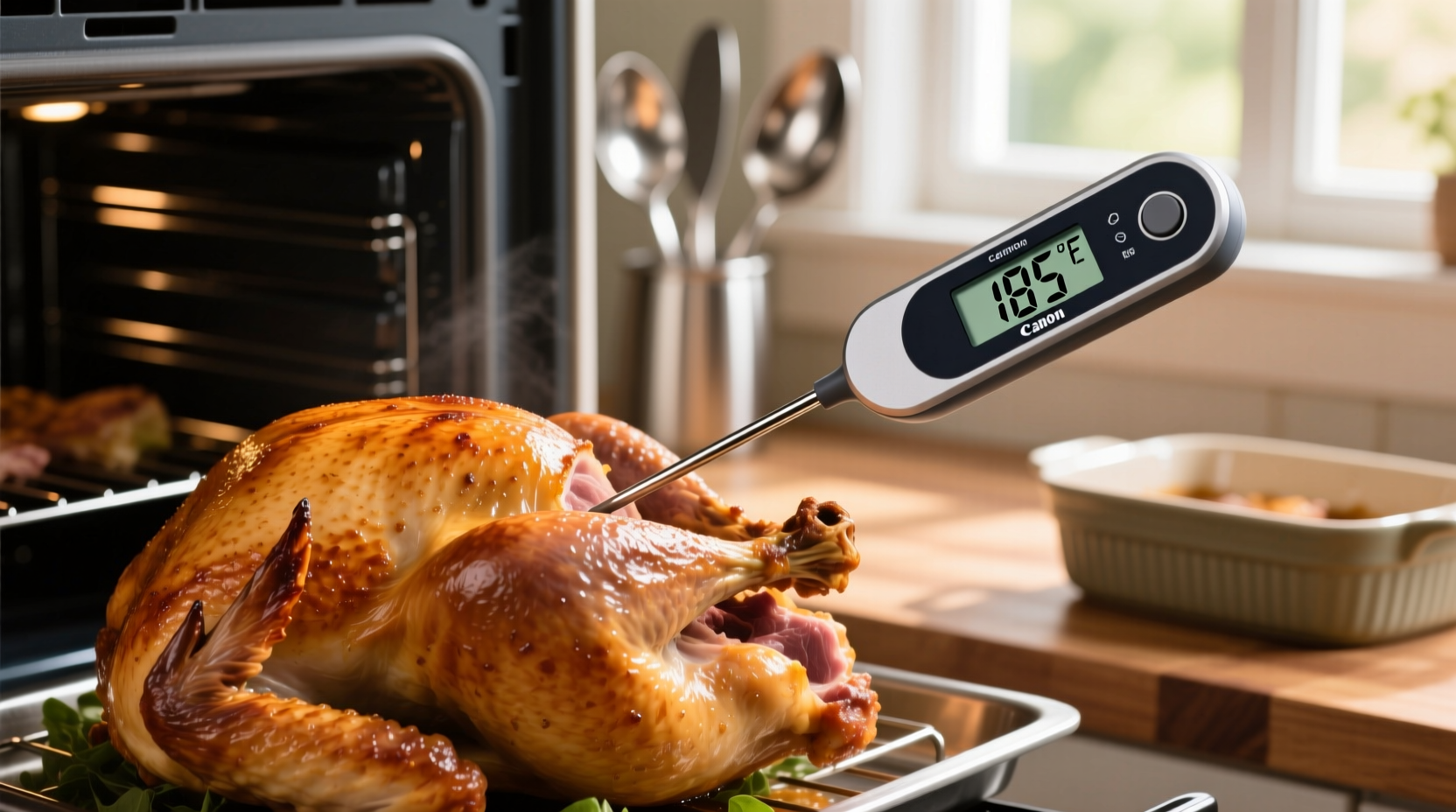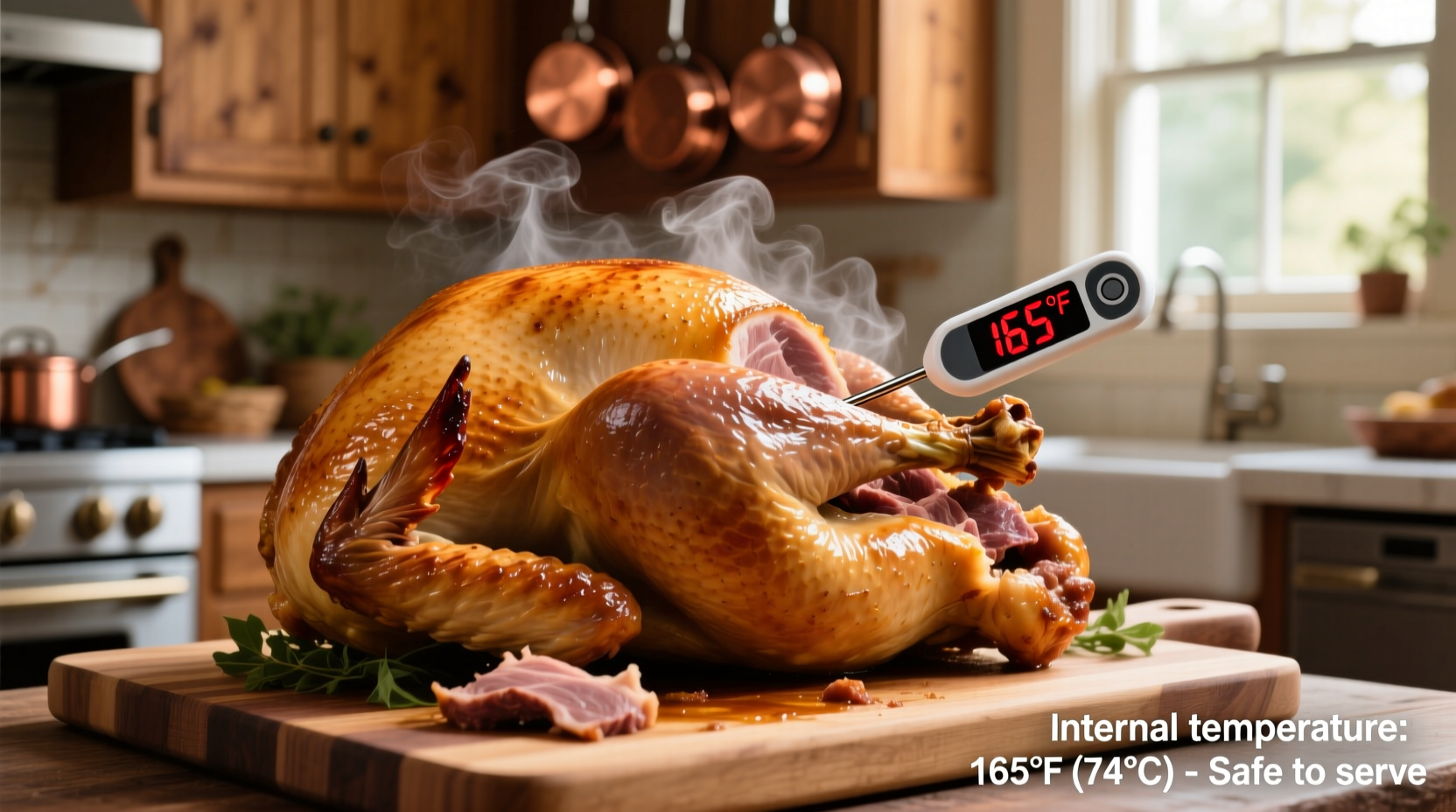Mastering Turkey Temperature: Your Complete Cooking Guide
Nothing ruins holiday expectations faster than an undercooked or dry turkey. Getting the temperature right isn't just about flavor—it's a critical food safety requirement. With decades of culinary experience, I've seen how precise temperature control transforms ordinary turkey preparation into a consistently successful centerpiece for your meal.
Why Temperature Matters More Than Cooking Time
While many recipes focus on "X minutes per pound," this approach fails to account for variables like oven accuracy, turkey size, and starting temperature. The only reliable method to determine doneness is using a calibrated food thermometer. The USDA Food Safety and Inspection Service has established 165°F (74°C) as the minimum safe internal temperature because this is the point where harmful pathogens are eliminated.
| Body Part | Safe Temperature | Measurement Location | Special Considerations |
|---|---|---|---|
| Thigh | 165°F (74°C) | Meaty part near bone | Avoid touching bone |
| Wing | 165°F (74°C) | Meatiest section | Check near body joint |
| Breast | 160-162°F (71-72°C) | Thickest section | Will rise to 165°F during rest |
| Stuffing | 165°F (74°C) | Center of cavity | Cook separately for safety |
Setting Your Oven: The Foundation for Success
While internal temperature is the critical factor, your oven temperature sets the cooking environment. The optimal oven temperature range for turkey is 325°F (163°C). This moderate heat allows for even cooking without burning the exterior before the interior reaches safe temperatures.
Contrary to popular belief, starting at a higher temperature (like 425°F) then reducing doesn't significantly decrease cooking time but increases the risk of uneven cooking. Professional kitchens consistently use the steady 325°F approach for predictable results.
Temperature Verification: Avoiding Common Mistakes
Many home cooks make critical errors when checking turkey temperature:
- Mistake: Checking only the breast
Solution: Verify multiple locations including thigh and wing - Mistake: Touching bone with thermometer
Solution: Insert probe into thickest meat portion away from bone - Mistake: Not calibrating thermometer
Solution: Test in ice water (32°F/0°C) or boiling water (212°F/100°C)

Resting: The Critical Final Step
Removing turkey from heat at 160-162°F in the breast allows carryover cooking to reach the safe 165°F threshold during the essential 20-30 minute resting period. This resting phase serves two vital functions:
- Temperature equalization: Heat redistributes from hotter exterior to cooler interior
- Juice retention: Muscle fibers relax, preventing dryness when carving
During this time, the internal temperature typically rises 5-10 degrees Fahrenheit. Cover loosely with foil to maintain warmth without trapping steam that could soften the skin.
Special Considerations for Different Cooking Methods
While the safe internal temperature remains constant at 165°F, different cooking methods require specific temperature management approaches:
Grill or Smoker Temperature Guidelines
When cooking turkey on indirect heat, maintain a consistent 275-325°F environment. The lower end of this range (275°F) works best for smoking, while 325°F is ideal for standard grilling. Use a remote thermometer probe for continuous monitoring without opening the lid.
Deep-Fried Turkey Safety
For deep-fried turkey, oil temperature must be precisely maintained at 350°F (177°C). The critical safety factor here is ensuring the entire bird reaches 165°F internally while preventing exterior burning. This requires careful monitoring with an instant-read thermometer at multiple points.
Historical Evolution of Turkey Cooking Standards
Turkey cooking recommendations have evolved significantly based on improved food safety research. In the 1980s, many cookbooks recommended 180°F for dark meat, resulting in consistently dry birds. The shift to 165°F across all parts came after USDA research demonstrated this temperature effectively destroys pathogens while preserving moisture.
This change reflects better understanding of bacterial death rates at various temperatures. The current standard balances safety with quality, recognizing that turkey continues cooking during the resting period.
Practical Tips for Perfect Results Every Time
Implement these professional techniques for flawless turkey preparation:
- Thermometer placement: Insert probe horizontally through the thickest part of breast meat for most accurate reading
- Timing strategy: Begin checking temperature 45-60 minutes before expected finish time
- Dry brine advantage: Salt turkey 24-48 hours before cooking to improve moisture retention at proper temperatures
- Butterflying technique: For faster, more even cooking, especially with larger birds
Avoiding Temperature-Related Disasters
Understanding temperature boundaries prevents common holiday catastrophes:
- Under 150°F: High risk zone for bacterial survival - never serve
- 150-160°F: Requires extended holding time to reach safety (not recommended)
- 165°F: Minimum safe temperature with immediate safety
- 170°F+: Increasing dryness, especially in breast meat
Remember that visual cues like clear juices or leg movement are unreliable indicators of safety. Only a properly used food thermometer provides the certainty you need.
Equipment Recommendations for Precision
Invest in these temperature tools for consistent success:
- Digital instant-read thermometer: For quick spot checks (Thermoworks Splashproof)
- Leave-in probe thermometer: For continuous monitoring (Thermapen Chef)
- Oven thermometer: Verifies your oven's actual temperature
Calibrate your thermometers monthly using the ice water (32°F) or boiling water (212°F) methods to ensure accuracy within ±1°F.











 浙公网安备
33010002000092号
浙公网安备
33010002000092号 浙B2-20120091-4
浙B2-20120091-4